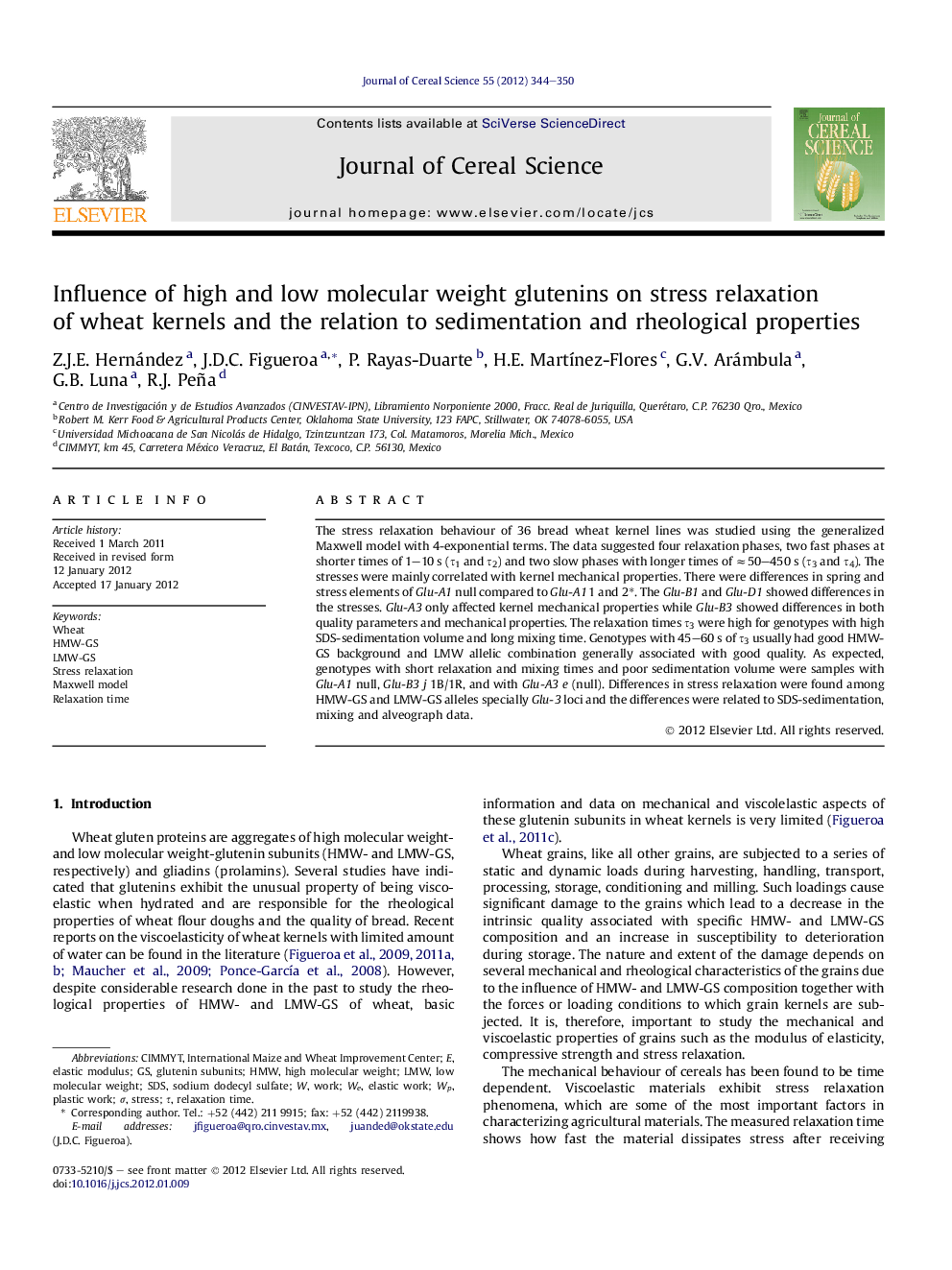| Article ID | Journal | Published Year | Pages | File Type |
|---|---|---|---|---|
| 4516022 | Journal of Cereal Science | 2012 | 7 Pages |
The stress relaxation behaviour of 36 bread wheat kernel lines was studied using the generalized Maxwell model with 4-exponential terms. The data suggested four relaxation phases, two fast phases at shorter times of 1–10 s (τ1 and τ2) and two slow phases with longer times of ≈50–450 s (τ3 and τ4). The stresses were mainly correlated with kernel mechanical properties. There were differences in spring and stress elements of Glu-A1 null compared to Glu-A1 1 and 2∗. The Glu-B1 and Glu-D1 showed differences in the stresses. Glu-A3 only affected kernel mechanical properties while Glu-B3 showed differences in both quality parameters and mechanical properties. The relaxation times τ3 were high for genotypes with high SDS-sedimentation volume and long mixing time. Genotypes with 45–60 s of τ3 usually had good HMW-GS background and LMW allelic combination generally associated with good quality. As expected, genotypes with short relaxation and mixing times and poor sedimentation volume were samples with Glu-A1 null, Glu-B3 j 1B/1R, and with Glu-A3 e (null). Differences in stress relaxation were found among HMW-GS and LMW-GS alleles specially Glu-3 loci and the differences were related to SDS-sedimentation, mixing and alveograph data.
► Stress relaxation of wheat kernels was studied with the generalized Maxwell model. ► Stress relaxation behaviour of HMW- and LMW-GS in intact wheat kernels was addressed. ► The relaxation times were associated with quality and rheological properties of wheat. ► HMW- and LMW-GS are predominant factors that affect the relaxation stress constants.
